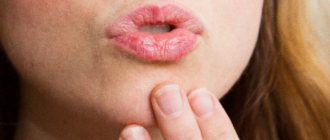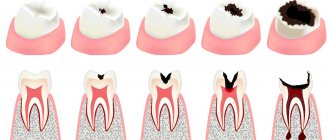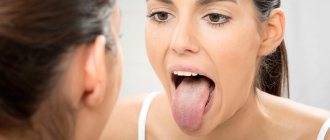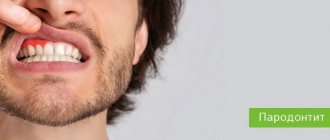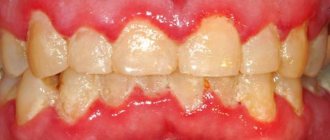Content:
- Types and purpose
- Anti-inflammatory
- Painkillers
- Wound healing
- Comprehensive periodontal treatment
- Rules of application
The products of the pharmaceutical industry are extremely diverse, including those for dental clinics. Without outside help, it can be difficult to figure out when gum ointment is needed and how an anesthetic dental gel differs from it. The review article will help classify the products prescribed by dentists according to their effects and composition, but this is in no way a guide to their independent use.
Types and purpose
Gum inflammation is a widespread problem. There are many reasons for it, but the results are always the same: they turn red and bleed, and there is an unpleasant odor from the mouth. Periodontists practice complex treatment: antibacterial medications for oral administration, physical therapy and local therapy.
For local therapeutic effects, antiseptics and analgesics are used in powders and rinsing solutions, but ointments and gels that act in a targeted, effective and long-lasting manner are more convenient. They are quickly absorbed, therefore they actively influence the affected tissues, shorten the healing time and alleviate the patient’s condition. Their peculiarity is the almost complete absence of contraindications, except for individual intolerance and a minimum of adverse reactions compared to other dosage forms.
All such preparations, spread and rubbed into the oral cavity, are usually classified into groups that differ in the basis that binds the active components:
- gels are water-soluble, they are light and have good absorption, so the active components immediately reach the diseased organ in full, in addition, the film formed on the surface acts as an additional protection for the mucous membrane:
- ointments are oily, have a dense and heavy consistency, which is poorly absorbed and washed off with saliva.
Only a doctor will be able to select the right type of medicine, based on the clinical picture of the disease and taking into account the individual characteristics of the patient.
Indications for the use of antibiotics in dentistry
The need for treatment with antibiotics depends on the nature of the infection and the body's ability to withstand the course. The main reasons for prescribing antibiotics include:
- When advanced caries threatens pulpitis, the dentist may prescribe antibiotics to limit the spread of the pathological process. The patient is prescribed antihistamines to complement the effectiveness of antibiotics.
- With the development of an inflammatory process of periodontal tissue (periodontitis), antibiotic therapy allows the destruction of protozoa, gram-negative anaerobes in the oral cavity. Various dosage forms of drugs are used for treatment: gels, ointments, intramuscular and intravenous injections, tablets.
- The proliferation of pathogens, poor immunity, caries and dense plaque can lead to the development of gingivitis. After laboratory detection of the sensitivity of microbes to the antibiotic, a course of treatment is prescribed. Antibiotic drugs are mainly used for catarrhal gingivitis.
- The appearance of purulent accumulations inside the oral mucosa provokes the appearance of a fistula. The process occurs due to the proliferation of anaerobic gram-negative bacteria, streptococci, staphylococci, Pseudomonas aeruginosa or Escherichia coli. A doctor-prescribed course of antibiotics, which are also used for dental implantation, will help cope with the infection.
- Inflammation of the connective tissue around the root of the tooth is called periodontitis. The occurrence of the disease is a consequence of dental trauma, a complication of pulpitis, caries, or an error in dental treatment. If the process is not stopped, pus may appear. The effectiveness of antibiotics for periodontal disease is felt after preliminary cleaning of the periodontal tissue.
- The result of inflammation of various origins can be a granuloma - a cavity of granulation tissue filled with fluid. Location: on the gum near the root of the tooth. It is important to start treating granuloma in the early stages. The use of antibiotics facilitates the opening of the granulosa vesicle and suppresses the infection accumulated in it, and serves to prevent infection. Self-medication with antibacterial drugs is unacceptable.
Anti-inflammatory
They help relieve pain, relieve swelling and itching, and reduce bleeding. They are prescribed after dental operations on the gums, after tooth extraction, implantation and other complex manipulations. This is a large group for the complex treatment of diseases with inflammatory and infectious processes:
- Gingivitis. Infection of the oral cavity occurs due to insufficient hygiene due to the accumulation of microorganisms. Bleeding of the affected areas and the development of severe complications are possible.
- Stomatitis is painful inflammation localized on the tongue, cheeks, and gums.
- Periodontitis is a disease that threatens the loss of a fragment of the jaw, with the formation of plaque, stones, and suppuration. It is painful.
- Periodontal disease is the gradual destruction of tissues surrounding and holding the elements of the jaw in their sockets, as well as mucous membranes and bone, causing atrophy, a decrease in bone volume with exposure of tooth roots.
Very popular in this line:
- Metrogyl Denta is a combined antibacterial gel for the treatment of infections of various etiologies.
- Dental, in addition to anti-inflammatory properties, has analgesic and wound healing properties.
- Solcoseryl is most in demand in dental practice. Unlike many others with similar effects, it is a medicine, not a balm, therefore it is often used for candidiasis, viral, traumatic and ulcerative necrotic stomatitis. Accelerates tissue regeneration.
- Cholisal - antimicrobial and analgesic effects. Inhibits the inflammatory process, reduces heat at the site of application.
Are antibiotics effective?
Before starting a course of antibiotics, you should determine the cause of your toothache. There are two main factors that provoke it:
- Caries that has developed to pulpitis. When the carious process affects the nerve, the tooth begins to react to various irritants: sour, sweet, cold, hot. Since in this case the pain is provoked by an intradental inflammatory process, antibiotics will be completely useless. For such pain, anti-inflammatory drugs, for example, Ibuprofen, are relevant. In addition to drug treatment, it is also planned to remove the affected tissue and fill the dental canals.
- An infection localized in a “dead” tooth. In such a situation, after removal of the nerve, the tooth does not react to sour, sweet and other irritants, but at the same time it hurts - and more and more every day. It's all about microbes that multiply either in an unfilled canal or in some tiny crack in the root. As a result, a purulent abscess or gumboil develops near the root of the tooth. The latter, by the way, is deadly. If such inflammation of the tooth root occurs, antibiotics are prescribed, but before taking them the patient will have to undergo the procedure of opening the abscess.
Before pinning any hopes on antibiotics, you should understand a few facts about this group of drugs:
- antibiotics help in treating the disease that provokes toothache, and do not relieve the pain itself (there are analgesics for this purpose);
- different antibiotics have different effects on pathogens, so it is almost impossible to successfully select such a medicine on your own;
- the effectiveness of taking antibiotics without concomitant dental treatment tends to zero.
The course of antibiotic treatment should not be interrupted prematurely: incomplete therapy will not lead to the desired result.
Painkillers
Indicated for severe pain, rubbed into the location of the pain symptom, after surgical manipulations to alleviate the condition during the recovery period. Anesthetic gel for teeth is often used during teething in babies.
All medicines are different in composition, so they are divided into categories:
- Anesthetic. It contains lidocaine, which can cause allergies, so it should only be prescribed by a doctor. They are used for severe pain and are characterized by a rapid effect. A prominent representative is the pain-relieving gel for gums Kamistad; Kalgel and Dentinox are popular and effective.
- Antiseptics. Lidocaine and other analgesics are not included; the anesthetic effect is imparted by an anti-inflammatory effect that reduces swelling. A typical representative is Cholisal, indispensable for teething, as it does not cause side symptoms and rarely gives allergic reactions.
- Homeopathic - created on the basis of plant extracts, therefore they are often used in pediatric dentistry. They can relieve pain for a short time, but do not cope with severe pain. The most popular children's dental ointment is Baby Doctor or Pansoral.
Gum massage during teething
Since drug treatment cannot be considered completely safe, you should try more moderate options first. We have already talked about one of them above - these are teethers. In addition to these, other measures can be taken. For example, switch to chilled food and drink. This will help reduce the discomfort a little.
Gentle gum massage will also be an effective solution. Be very careful, since your baby's gums are very delicate, if you overdo it, there is a risk of increasing the pain. Therefore, you should approach massage wisely and with balance. And most importantly, with full knowledge of the methodology.
The massage consists of three main stages:
- Preparation.
If you decide that you will massage your gums with your finger, you need to trim your nails well, rinse thoroughly, and disinfect. It is very important to get rid of any dirt on your hand. But since this is quite difficult, there is a simpler and more convenient option - use special finger pads or napkins. They can not only massage your gums, but also gently clean your first teeth of food debris. Wet wipes "ASEPTA BABY" from 0 to 3 years help reduce pain during teething, effectively cleanse the oral cavity of food debris, and reduce the risk of inflammation. Each napkin is individually packaged; when using, you do not need to rinse your mouth with water. So you can have a massage not only at home, if necessary. Place the napkin on your finger, now you can proceed directly to the massage itself. - Massage.
Both infants and older children need to move massage movements from the edges of the disturbing areas to the site of eruption. Lightly rub the gums, stroke or apply a little pressure. All these movements can be combined. Watch your baby's reaction and choose the option he likes best. You don’t have to worry that you won’t be able to reach all the places; the soft fibers of the finger napkin will help you massage hard-to-reach areas. Remember that the procedure should be carried out only where the roots of the teeth are. There is no need to massage the eruption site itself, as this can worsen the child’s condition, cause discomfort and make it difficult for the tooth to emerge. - Hygiene.
As early as six months, you can accustom your child to the need for daily oral care. At this time, it is already recommended to use a special children's brush instead of a finger napkin, as well as toothpastes intended for children. For example, ASEPTA BABY paste, made on the basis of plant extracts. This product does not contain resin or abrasive substances, so it is excellent for newly erupted baby teeth that are still fragile. The paste has a pleasant taste, which will make the cleaning process more enjoyable. At first, watch the cleaning, and when the child grows up, he can do everything on his own.
Teething massage is an effective procedure that can not only reduce discomfort, but also reduce the use of medications. But it is very important to be extremely careful when performing a massage, both for infants and older children. Babies' gums are much more tender than those of adults. But if you do everything correctly, then after a fairly short time you will notice that the baby has become more comfortable, he has calmed down, and the teething itself is faster and easier.
Wound healing
Their main purpose is to accelerate natural regeneration and stop the inflammatory process. Used in dentistry for the treatment of injuries in the following cases:
- surgical intervention, for example, when removing a chewing element or surgery on bone tissue;
- in the presence of ulcers, fistulas, ulcers and necrosis;
- mechanical injury;
- for burns of the mucous membrane (for example, hot food or drinks).
Also indicated for a complex of therapeutic procedures. For example, in case of periodontal damage, pain-relieving ointment for gums Levomikol or Parodontocyte is often used for restoration and accelerated regeneration.
Attention! Almost all of the above medications are over-the-counter, but the choice of a specific drug should only be made by a doctor. Particular care must be taken when using anesthetic dental gel for infants.
Traditional methods
For inflammation of the gums, rinses, applications, and oral baths with antiseptic anti-inflammatory drugs are most often used.
- Rinse - intensive rinsing of the mouth with herbal infusions or ready-made medications. The procedure should be carried out after eating. The solution should not be too hot.
- Mouth baths are good for inflammation. Warm healing decoction must be held in the mouth for 30-60 seconds, repeated 5-7 times a day.
- Applications are indicated for advanced inflammatory processes. A gauze bandage soaked in the medicine is applied to the inflamed area of the gum for 10-20 minutes, 2-3 times a day.
Traditional methods of treatment are designed for long-term use; you should not expect healing after the first procedure.
Propolis tincture
Used for rinsing and mouth baths. Dissolve 20 drops of propolis alcohol tincture in a glass of warm water and rinse your mouth 4-5 times a day. Soak a gauze strip with an aqueous solution and apply it to the inflamed gum for several minutes.
Garlic
An excellent natural antibiotic, used for rinsing. Soak one part of garlic for 30 minutes in three parts of water, rinse the mouth with the resulting infusion three times a day.
Sea salt
Strengthens gums, has an anti-inflammatory effect, reduces bleeding, suitable for rinsing and rubbing. Dissolve 1 tablespoon of salt in a glass of water and rinse your mouth after eating. You can prepare an effective rubbing paste at home. Mix 3 tablespoons of sea salt, 2 tablespoons of crushed dried banana skins with a small amount of olive oil until a thick, homogeneous mass is obtained. Rub into gums morning and evening.
Comprehensive periodontal treatment
Therapy for periodontal diseases is long and complex. The process of destruction of the tissues surrounding the tooth has already begun, and ointment for strengthening the gums or preparations with a gel structure are effective to strengthen them. Depending on the condition of the oral cavity, ointments are prescribed:
- Heparin. Slows down blood clotting, normalizing microcirculation. The benzocaine it contains provides pain relief. Apply by appliqué.
- Levomekol. Heals wounds, relieves inflammation. It is also applied as applications, as it is poorly absorbed by the mucous membrane.
- Troxevasin/Troxerutin. A gel-based anti-inflammatory medication with venotonic, angioprotective (improves blood flow and metabolism) and anti-edema effects. Strengthens the walls of capillaries and increases their elasticity.
- Asepta. Antiseptic ointment with propolis containing chlorhexidine and metronidazole to fight infections. Contains coenzyme Q10, so it adheres well to the gums without being washed off by saliva. Antimicrobial, antipruritic, analgesic agent accelerates epithelial regeneration and improves metabolic processes.
- Cryogel. Also, for strengthening, with an antimicrobial and drainage effect, it is placed in the periodontal pocket.
Most of them are dispensed from pharmacies without a prescription and have no special contraindications or adverse reactions. But they must be prescribed by a dentist, in accordance with the clinical picture.
Diagnosis of gum inflammation
The main methods for diagnosing the disease are:
- Collecting anamnesis, interviewing the patient . The doctor is interested in how long ago the symptoms of the disease appeared, whether treatment was previously carried out, whether the patient has concomitant and chronic diseases, and so on.
- Visual inspection.
- Examination of the oral cavity. The specialist evaluates the correctness of the bite, the condition of the oral mucosa, teeth and gums.
- Index score. Using special formulas, the dentist calculates the severity of gingivitis.
In addition, to clarify the diagnosis and severity of the disease, the patient may be prescribed a number of additional studies:
- radiography – carried out for differential diagnosis of gingivitis from periodontitis;
- blood test for syphilis and HIV;
- blood test (general, biochemical) - to exclude blood diseases and diabetes;
- microbiological examination - to identify the type of inflammatory pathogen.
Rules of application
In order for medications to have the necessary effect, before using them you need to brush your teeth, rinse and dry your mouth thoroughly, and wash your hands with soap. Apply gels and ointments with your finger, rubbing them into the mucous membrane with a light massaging movement. After this, you should not drink or eat for half an hour. The duration of the therapeutic course is determined by the attending dentist, but usually until the inflammatory and other symptoms disappear.
For preventive purposes, you can use herbal preparations and rinsing solutions. Toothpastes that have proven their effectiveness and are recommended by professionals are useful: Lakalut, Paradontax, President. They should be used for prevention for a month, and then take a break.
Expert opinion . Even the best toothpastes are only preventive measures; they can promote healing, but are not a cure, so if any dental ailments appear, you should consult a doctor, and not try to eliminate them with home recipes: they still won’t help, and any disease will is much more treatable in the initial stages.
